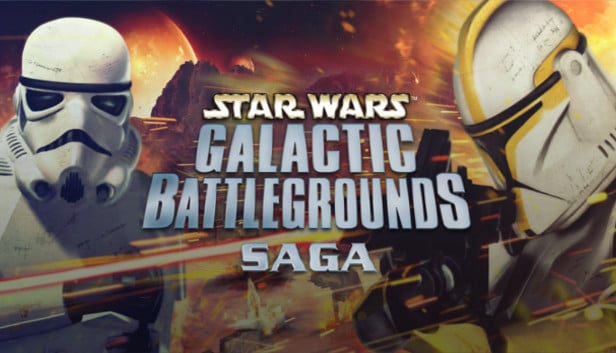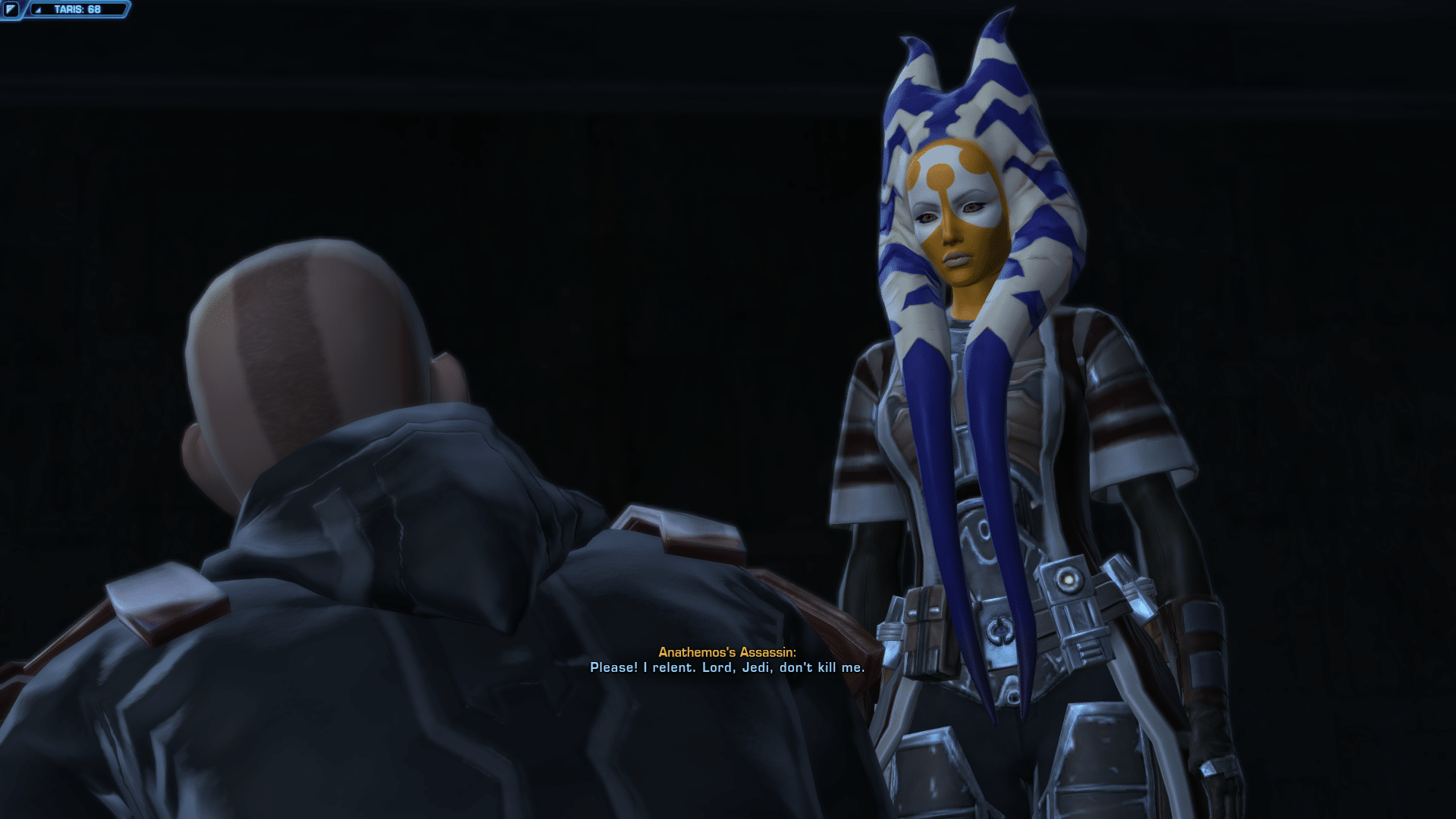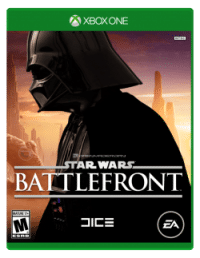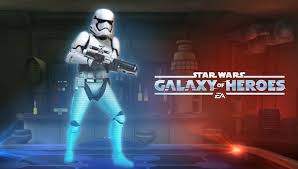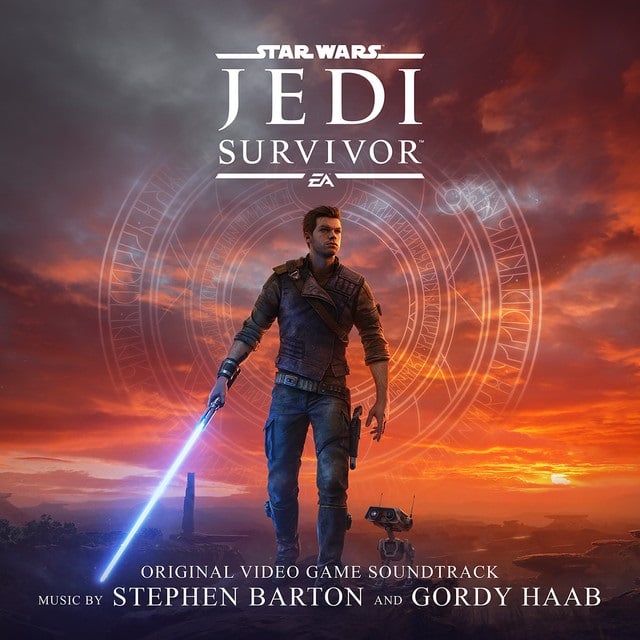Strap in, Star Wars enthusiasts and gaming veterans alike! Today, we’re embarking on a nostalgic journey back to the early 2000s, to revisit and reassess a classic – “Star Wars: Galactic Battlegrounds.” This game, once a beacon in the realm of Real-Time Strategy (RTS) set within the mesmerizing Star Wars universe, begs the question: How does it stack up in today’s rapidly evolving gaming world? Does it still hold the same charm and strategic allure it did back in the day? Let’s hop into our gaming time machine and find out.
In this retrospective review, we’ll cover several key aspects of “Star Wars: Galactic Battlegrounds”:
- The Context of Its Time: Understanding the era of its release and how it fit into the gaming landscape of the early 2000s.
- Graphics Examination: Analyzing the visual aspects of the game – from its pixelated units to the atmospheric worlds it created.
- Gameplay Mechanics: Diving into the core of what made the game tick – its gameplay. How did it balance simplicity and strategy, and how does it compare to today’s games?
- Storytelling within the Star Wars Universe: Evaluating how the game contributed to the broader Star Wars lore and its narrative approach compared to current gaming trends.
Embarking on this journey, we aim to not only reminisce about a game that many of us spent countless hours playing but also to objectively analyze its place in the grand tapestry of Star Wars games. Is “Star Wars: Galactic Battlegrounds” a mere relic of the past, or does it still have lessons and joys to offer in the present? Let’s dive in and explore every nook and cranny of this beloved classic.
“Star Wars: Galactic Battlegrounds”: A Trailblazer of Its Time
When “Star Wars: Galactic Battlegrounds” hit the shelves in the early 2000s, it wasn’t just another addition to the ever-growing library of Star Wars games; it was a trailblazer that charted a new course in the realm of Real-Time Strategy (RTS) gaming. This game carved out a unique niche, blending the beloved Star Wars universe with the strategic depth and dynamism of RTS gameplay. Let’s delve deeper into what made this game a standout title in its time.
- The Fusion of Genres: One of the most remarkable aspects of “Star Wars: Galactic Battlegrounds” was its successful fusion of a rich sci-fi universe with the mechanics of real-time strategy. This was a bold move, as it brought together two distinct gaming communities – the Star Wars fanatics and the RTS aficionados. It was a gamble that paid off, creating a gameplay experience that was both familiar and innovative.
- Built on a Proven Engine: Utilizing the renowned Age of Empires II engine, “Galactic Battlegrounds” offered a solid and proven foundation for its gameplay. This choice provided reliability and familiarity, which was crucial for attracting fans of traditional RTS games. The engine was tweaked and adapted to fit the Star Wars theme, resulting in a gameplay experience that was both efficient and thematic.
- Iconic Star Wars Elements: The game brilliantly incorporated iconic elements from the Star Wars universe. Players could command units like AT-ATs, X-Wings, and even Jedi Knights, each with their unique abilities and roles. This not only added a layer of strategic depth but also allowed players to live out their Star Wars fantasies, commanding epic battles that felt like they were straight out of the movies.
- Variety of Factions and Units: Unlike many RTS games of its time, “Star Wars: Galactic Battlegrounds” offered a diverse range of factions, each with its unique units, structures, and strategies. From the Galactic Empire to the Rebel Alliance, and even lesser-explored factions like the Gungans and Wookiees, the game provided a rich tapestry of Star Wars lore for players to dive into.
- Multiplayer and Community Building: The game’s multiplayer aspect was another feather in its cap. It fostered a robust online community, with players battling it out in epic space and ground skirmishes. The game became a meeting ground for fans to share strategies, forge alliances, and even create custom scenarios, contributing to the longevity of the game.
- Expansions and Extended Play: The release of the expansion pack, “Clone Campaigns,” further cemented the game’s status as a trailblazer. This expansion not only added new units and campaigns but also aligned the game with the then-recently released “Star Wars: Episode II – Attack of the Clones,” showcasing the game’s ability to evolve and stay relevant.
In retrospect, “Star Wars: Galactic Battlegrounds” was more than just a game; it was a bold synthesis of a beloved film franchise and a popular game genre. It pushed the boundaries of what was expected from a Star Wars game and set a high bar for subsequent RTS titles in the franchise. This game wasn’t just playing it safe; it was charting a new course in the galaxy of Star Wars gaming, making it a true trailblazer of its time.
Graphics: Pixelated Charm or Dated Imagery?
In the grand tapestry of “Star Wars: Galactic Battlegrounds,” the graphics hold a special place. Released at a time when the gaming industry was on the cusp of a graphical revolution, “Galactic Battlegrounds” showcased a visual style that, while impressive for its era, might raise eyebrows in today’s world of hyper-realistic gaming graphics. Let’s explore this aspect in more depth.
- A Product of Its Time: First and foremost, it’s essential to contextualize the graphics of “Galactic Battlegrounds.” Released in the early 2000s, the game was built on the Age of Empires II engine, which meant it inherited a certain graphical style – one that was pixelated yet functional. For the standards of its time, these graphics were quite competent, offering clear visuals that helped players navigate the strategic gameplay effectively.
- The Pixelated Aesthetic: There’s a certain nostalgic charm to the pixelated graphics of “Galactic Battlegrounds.” The game’s visual style evokes memories of a simpler time in gaming, where imagination filled in the gaps that technology couldn’t bridge. For many players, this pixelated look is not just a reminder of the game’s age but a beloved feature that gives it a unique identity.
- Attention to Detail: Despite the limitations of its engine, “Galactic Battlegrounds” didn’t skimp on details. The units and structures were distinct and recognizable – you could tell an X-Wing from a TIE Fighter with just a glance. The landscapes, from the icy plains of Hoth to the forests of Endor, were crafted with care, offering a variety of terrains that added both visual interest and strategic depth to the gameplay.
- Animation and Effects: The game’s animations and special effects deserve a nod as well. Blaster fire, lightsaber duels, and the rumble of AT-ATs were all rendered with a level of detail that brought the battles to life. These effects, while not as smooth or flashy as modern games, contributed significantly to the game’s immersive experience.
- Comparisons with Modern Standards: When held against the backdrop of today’s gaming graphics, “Galactic Battlegrounds” naturally shows its age. Modern games, with their lifelike textures, advanced lighting effects, and high frame rates, offer a level of realism that was unimaginable two decades ago. However, comparing them directly wouldn’t be entirely fair. “Galactic Battlegrounds” was a product of its era, and within that context, it achieved what many games strive for – a visually engaging experience that complemented its gameplay.
- The Role of Graphics in Gameplay: An essential aspect to consider is how graphics influence gameplay. In “Galactic Battlegrounds,” the simpler graphics meant that the focus was more on strategy and less on visual flair. This clarity often allowed for a more streamlined gaming experience, where decisions and reactions could be made swiftly without the distraction of overly complex visuals.
In conclusion, the graphics of “Star Wars: Galactic Battlegrounds” can be seen as a double-edged lightsaber. On one side, they represent a bygone era of gaming, offering a nostalgic charm and a simplicity that many modern games lack. On the other, they can seem dated compared to today’s advanced graphical capabilities. Yet, in the grand scheme of things, these graphics were an integral part of what made “Galactic Battlegrounds” a memorable and beloved title in the Star Wars gaming legacy.
Gameplay Mechanics: Simple Yet Deep
In dissecting the allure of “Star Wars: Galactic Battlegrounds,” the gameplay mechanics stand out as a key factor in its enduring appeal. The game struck a rare balance – it was accessible enough for newcomers to the RTS genre while still offering a depth that could challenge seasoned veterans. Let’s take a deeper dive into the nuances of its gameplay that made “Galactic Battlegrounds” both a joy to play and a strategic battleground.
- Ease of Entry, Challenge for Mastery: One of the defining aspects of “Galactic Battlegrounds” was its user-friendly interface and straightforward gameplay mechanics. New players could quickly grasp the basics: gathering resources, building structures, and creating units. Yet, beneath this apparent simplicity lay layers of strategic depth. Mastering the game required understanding the unique strengths and weaknesses of each faction, effectively managing resources under pressure, and executing complex military tactics.
- Diverse Factions and Units: The game offered a wide range of factions, each with its unique units, technologies, and special abilities. This diversity wasn’t just cosmetic; it fundamentally influenced gameplay strategies. Playing as the Galactic Empire, with its heavy machinery and advanced technology, felt markedly different from leading the Rebel Alliance with their guerrilla tactics. This variety ensured that each playthrough could offer a new experience and challenge.
- Strategic Combat and Unit Management: Combat in “Galactic Battlegrounds” was more than just about having the biggest army. Positioning, unit composition, and the timing of attacks were crucial. The game rewarded tactical thinking, like using anti-air troopers against enemy fighters or sneaking a group of stealthy units to ambush resource gatherers. Managing these units in real-time, responding to enemy movements, and adapting strategies on the fly were skills that players honed over time.
- Resource Management and Base Building: At its core, the game was about efficient resource management and base building. Balancing resource gathering with military spending, expanding your base while defending it, and choosing the right moments to upgrade technologies were decisions that could turn the tide of a game. This strategic planning aspect added a cerebral layer to the gameplay, appealing to players who enjoyed thinking several moves ahead.
- Campaigns and Storytelling: Each faction had its campaign, weaving stories that were both engaging and deeply embedded in the Star Wars lore. These campaigns were more than just a series of battles; they were narrative experiences that allowed players to delve deeper into the universe. Playing through these campaigns wasn’t just entertaining; it was a journey through the rich tapestry of Star Wars stories.
- Multiplayer Dynamics: The multiplayer aspect of “Galactic Battlegrounds” added another layer of depth. Competing against human opponents introduced unpredictability and a need for adaptability. Players had to constantly evolve their strategies, predict their opponents’ moves, and react in real-time. This dynamic was a significant draw for the game, keeping the gameplay fresh and exciting.
- Custom Scenarios and Creativity: Lastly, the game’s scenario editor was a boon for creative players. It allowed them to craft their unique maps, set up custom game rules, and even create new storylines. This feature not only extended the game’s lifespan but also fostered a community of players who shared their creations, adding even more variety to the gameplay experience.
In sum, the gameplay mechanics of “Star Wars: Galactic Battlegrounds” were a masterful blend of simplicity and depth. They provided an accessible entry point into the RTS genre while offering a rich strategic playground for those who delved deeper. This balance is a significant reason why the game remains a fond memory for many and continues to be a benchmark for strategy games in the Star Wars universe.
Storytelling in the Star Wars Universe
The storytelling aspect of “Star Wars: Galactic Battlegrounds” is a facet that deserves its own spotlight. In a franchise famed for its epic narratives and complex characters, the game managed to carve out its unique space, contributing to the rich tapestry of the Star Wars universe. Let’s explore how “Galactic Battlegrounds” not only respected the source material but also added new layers to the beloved saga.
- Faithful to the Canon: First and foremost, “Galactic Battlegrounds” was a love letter to the Star Wars canon. The game’s campaigns were set in familiar timelines, featuring well-known characters and events from the movies. This approach helped fans instantly connect with the game, as they could participate in and influence events they had seen on the big screen.
- Expanding the Lore: Beyond retelling known stories, “Galactic Battlegrounds” also ventured into lesser-explored corners of the Star Wars universe. It introduced new characters, planets, and conflicts, enriching the lore. This exploration was not just a treat for hardcore fans; it also made the Star Wars universe more accessible and intriguing to newcomers.
- Campaigns and Characters: Each faction in the game had its campaign, complete with a storyline that delved into the motivations and struggles of that group. These campaigns were more than a series of battles; they were narrative journeys. Players could step into the shoes of leaders like Princess Leia or Darth Vader, making strategic decisions that would shape the fate of their factions.
- Narrative-Driven Gameplay: The storytelling in “Galactic Battlegrounds” was intricately woven into the gameplay. Objectives in each mission were tied to the storyline, making each battle feel like a crucial part of the larger narrative. This integration of story and gameplay ensured that players were not just fighting to win but were also engaged in advancing the plot.
- Emotional Engagement: The game excelled in creating an emotional connection with the characters and the story. Whether it was the triumph of successfully defending Naboo from the Trade Federation or the tension of a desperate battle against the Galactic Empire, players were emotionally invested in the outcomes. This engagement made victories more satisfying and defeats more poignant.
- The Role of Voice Acting and Music: The game’s voice acting and music deserve a special mention. Iconic Star Wars themes and sound effects were used effectively to set the mood and enhance the storytelling. The voice acting helped bring characters to life, adding personality and depth to the narrative.
- Legacy in Star Wars Gaming: “Galactic Battlegrounds” set a precedent for storytelling in Star Wars games. Its success demonstrated that fans craved stories that both respected the original material and expanded upon it. Future Star Wars games would follow this lead, crafting their narratives that were both familiar and fresh.
- Influence on Fan Perceptions: Finally, the game influenced how fans perceived certain characters and events in the Star Wars universe. By providing new contexts and backstories, “Galactic Battlegrounds” added layers to the Star Wars saga, making it a richer and more complex universe.
In conclusion, the storytelling in “Star Wars: Galactic Battlegrounds” was a pivotal element that elevated the game from a mere strategy experience to an immersive narrative journey. The game showcased how interactive media could both respect and expand a beloved universe, offering fans new ways to engage with their favorite saga. This approach to storytelling in the Star Wars universe set a high bar for future games and remains a cherished memory for players who experienced it.
Conclusion: A Legacy Worth Remembering
As we conclude our retrospective journey with “Star Wars: Galactic Battlegrounds,” it’s evident that this game is more than a mere footnote in the annals of Star Wars gaming history. It’s a title that, despite the passage of time and the leaps in gaming technology, holds a special place in the hearts of many. Its legacy is multifaceted, spanning from its pioneering gameplay mechanics to its enriching additions to the Star Wars lore.
- Enduring Appeal: The enduring appeal of “Galactic Battlegrounds” lies in its successful marriage of the strategic depth of RTS gaming with the rich storytelling of the Star Wars universe. Even today, it stands as a benchmark for how strategy games can incorporate narrative elements effectively, making each campaign not just a series of battles but a cohesive story.
- Innovative Game Design: At its core, “Galactic Battlegrounds” was a testament to innovative game design. It challenged the norms of its time, proving that a game could be both accessible to newcomers and deeply satisfying for seasoned players. The game’s design encouraged strategic thinking and creativity, offering multiple paths to victory and a replay value that many modern games strive to achieve.
- A Nostalgic Journey: For many players, “Galactic Battlegrounds” represents a nostalgic journey back to a simpler time in gaming. Its pixelated graphics and straightforward mechanics evoke memories of hours spent in front of computer screens, immersed in a galaxy far, far away. This nostalgia adds a timeless charm to the game, making it a cherished piece of personal and gaming history.
- Influence on Subsequent Star Wars Games: The influence of “Galactic Battlegrounds” on subsequent Star Wars games and the RTS genre cannot be overstated. It showed that the Star Wars universe could be successfully adapted to different gaming genres, inspiring future titles to explore new and innovative ways to bring the saga to life in the gaming world.
- Community and Legacy: The community that grew around “Galactic Battlegrounds” played a significant role in its longevity. From online battles to custom scenarios, the game fostered a sense of camaraderie and shared passion. This community has kept the game alive long after its initial release, through forums, modding, and multiplayer sessions.
- A Benchmark for Future Games: “Star Wars: Galactic Battlegrounds” set a high benchmark for future strategy games in the Star Wars franchise. Its balance of gameplay, storytelling, and faithful representation of the universe is a blueprint that many games have attempted to emulate but few have matched.
- Reflection of Its Era: Finally, the game is a reflection of its era, a snapshot of a time when gaming was transitioning into more complex and visually stunning experiences. It stands as a testament to the creativity and ambition of game developers at the turn of the millennium, who were able to create a captivating experience with the technology available to them.
In wrapping up, “Star Wars: Galactic Battlegrounds” deserves to be remembered not just as a game but as a milestone in the evolution of Star Wars gaming. Its impact on the genre, its contribution to the Star Wars universe, and its enduring appeal to fans are all part of its rich legacy. As we look back at this classic, it’s clear that “Galactic Battlegrounds” was more than a game; it was, and remains, a pivotal chapter in the story of Star Wars gaming.
FAQ: Star Wars: Galactic Battlegrounds Retrospective
- What is ‘Star Wars: Galactic Battlegrounds’?
- Star Wars: Galactic Battlegrounds’ is a real-time strategy game released in the early 2000s, set in the Star Wars universe and built on the Age of Empires II engine.
- What makes ‘Galactic Battlegrounds’ unique in the Star Wars game series?
- It uniquely blends classic RTS gameplay with the Star Wars universe, offering diverse factions, strategic depth, and a strong narrative aligned with the Star Wars lore.
- Can ‘Galactic Battlegrounds’ still be played on modern computers?
- Yes, ‘Galactic Battlegrounds’ can still be played on modern systems, often available through digital gaming platforms with compatibility updates.
- Did ‘Galactic Battlegrounds’ influence other Star Wars games?
- Absolutely. It set a precedent for integrating deep storytelling and strategy in Star Wars games, influencing the design of subsequent titles in the franchise.
- What are the key features of ‘Galactic Battlegrounds’ gameplay?
- Key features include diverse factions, resource management, base building, strategic combat, and campaigns based on Star Wars stories.
- How does the game’s graphics compare to modern standards?
- While its graphics are dated compared to modern games, they possess a nostalgic charm and effectively convey the game’s strategic elements.
- Is ‘Galactic Battlegrounds’ suitable for all ages?
- Yes, it’s generally suitable for all ages, especially for fans of strategy games and the Star Wars universe, but always check the game’s rating for guidance.
- Was there an expansion for ‘Galactic Battlegrounds’?
- Yes, an expansion called “Clone Campaigns” was released, adding new units, campaigns, and aligning with the “Attack of the Clones” movie storyline.
- Are there any active online communities for ‘Galactic Battlegrounds’?
- Yes, there are still active online communities where fans discuss the game, share strategies, and sometimes organize multiplayer matches.
- Does ‘Galactic Battlegrounds’ have a multiplayer mode?
- Yes, it includes a multiplayer mode, allowing players to compete against each other or cooperate in various strategic battles.


